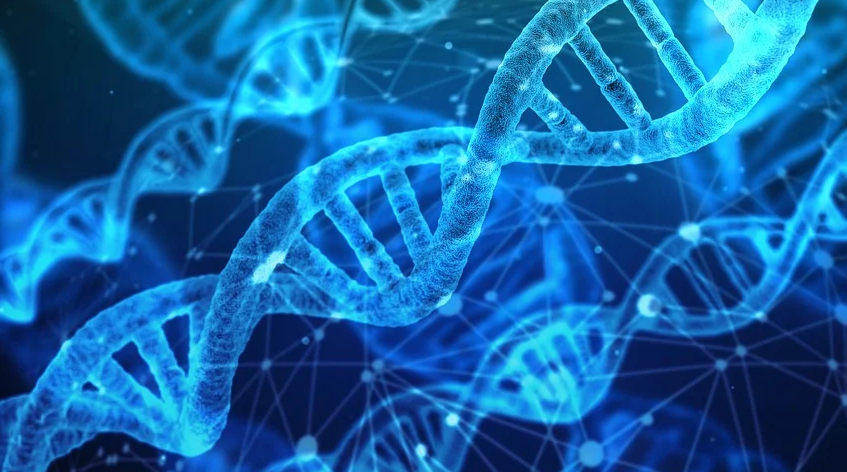Face It: The Truth Behind Facial Recognition
Face It: The Truth Behind Facial Recognition
Joanna Cheng
Edited by Teknos 2019-2020 Staff
New facial recognition technology on the iPhone: exciting, right? Now, a single glance can unlock your digital world. However, these facial recognition systems are also being implemented in more weighty applications. How would you feel to have cameras identify you as you stroll down the street? In China, a man walking around a city populated by more than three million people was recognized by the city’s facial recognition system in only seven minutes [5]. This dystopian reality brings up fears about the ethics of its implementation, but before we dive into the implications of facial recognition, we must understand how it works.
The first step in facial recognition is for the system to locate the face in the photo and extract it from the rest of the image. Then, the system recognizes certain features on the face called nodal points, such as the distance between the eyes, the length of the jawline, and the shape of the cheekbones. These nodal points are reduced to a mathematical representation and compared within a database to find a match [4]. The most common methods of implementing the facial recognition system are principal component analysis (PCA) and neural networking [1]. PCA compresses data into a few dimensions to make it easier to work with by using the principle that almost all large datasets contain correlations between different dimensions of data, creating redundancy. Therefore, the data can be combined into only a few dimensions without losing much data [6]. Neural networks are utilized in facial recognition as well, since they can detect patterns, patterns of patterns, and so on [1]. In the neural network facial recognition system implemented by Aitkenhead and McDonald (2003), they instructed the system to find the eyes and upper lip of a face image, rotate the image so that the eyes were on a horizontal line, and scale the image so that there were a certain number of pixels between the eyes and the upper lip. These modifications standardized the photos for comparison within a database.
However, facial recognition systems are flawed. They have difficulty evaluating matches in low lighting, blurry pictures, or at bad angles [2]. If the correct person is not in the database or the database is too large, the systems often declare false positives, which are erroneous matches. In fact, when Amazon’s facial recognition system was used against members of Congress, twenty-eight were incorrectly matched in a mugshot database. Real-time facial recognition is especially inaccurate; a study found that a real-time facial recognition system identified ten times as many false positives as accurate matches [5].
Not only do these systems have a plethora of functional issues, but they may also disfavor certain groups of people. For example, these systems are especially inaccurate when identifying minorities, women, and children. These groups could face discrimination and possibly false accusations for crimes under the heavy implementation of facial recognition systems. Due to biased police practices, there are more minorities such as Latinos and African Americans in these criminal databases, so it is more likely for one of these minorities to be accused wrongly due to a false positive [2]. For instance, in Virginia, the rate at which African Americans are arrested, and correspondingly, their presence in mugshot databases, is 108% higher than the amount of the population they make up. Another issue with the mugshot databases is that Virginia police can run searches on mugshots without reasonable suspicion, and since mugshots are taken when you are arrested, even if the charge is dropped later, the police do not clean their database to take you out of it. For some states, such as in Maryland and North Carolina, the police can even look through driver’s license photos [3].
To make matters worse, facial recognition systems are often used by the police to identify and apprehend protesters exercising their first amendment rights. Furthermore, in certain cases, the use of facial recognition in public could collect enough information about one’s personal life that could amount to an unwarranted search, a violation of the fourth amendment [4]. There are few precedents in place for cases such as these, so it is difficult to make a decision, especially as we are heading towards a future where the concept of privacy is fading into an illusion.
Facial recognition systems improve day by day, but with these systems come real concerns over privacy and discrimination. Certain changes need to be made in legislation regarding facial recognition, such as requiring reasonable suspicion to conduct searches in databases, having the system pass a certain success rate before implementation, and cleaning mugshot databases. Facial recognition systems are not accurate enough to be implemented in situations where the outcome could be using force against a person or putting an innocent person in jail. Although 90% accuracy may sound high, it is not high when innocent people’s livelihoods are at stake [5]. There is still much work to do before these systems can begin to make real, safe, and fair changes in our lives.
References
[1] Aitkenhead, M. J., & McDonald, A. J. S. (2003). A neural network face recognition system. Engineering Applications of Artificial Intelligence, 16(3), 167-176. https://doi.org/10.1016/S0952-1976(03)00042-3
[2] Face recognition. (2017, October 24). Retrieved December 1, 2019, from https://www.eff.org/pages/face-recognition
[3] Garvie, C., Bedoya, A., & Frankle, J. (2016, October 18). The perpetual line-up. Retrieved December 1, 2019, from https://www.perpetuallineup.org/
[4] Hamann, K., & Smith, R. (2019). Facial recognition technology: where will it take us? Retrieved December 1, 2019, from https://www.americanbar.org/groups/criminal_justice/publications/criminal-justice-magazine/2019/spring/facial-recognition-technology/
[5] Laperruque, J. (2018, December 5). Unmasking the realities of facial recognition. Retrieved December 1, 2019, from https://www.pogo.org/analysis/2018/12/unmasking-the-realities-of-facial-recognition/
[6] Wallisch, P. (2014). Chapter 19 - principal components analysis. MATLAB for Neuroscientists (Second Edition), 305-315. https://doi.org/10.1016/B978-0-12-383836-0.00017-5






